It’s hard to focus with the Hurons nestled up against the shore outside my office window. The new series from Esquif Canoes features a 15-and 16-foot duo ideal for the sheltered waters beside Paddling Magazine’s cottage-turned-office headquarters.
Esquif Canoe’s Huron Canoe Specs
Length: 15 ft/ 16 ft
Width: 35 in/ 35 in
Depth: 12.5 in/ 12.5 in
Weight: 55 lbs/ 60 lbs
Price: $1,900 USD–$2,115 CAD/ $2,005 USD–$2,230 CAD
esquif.com
Esquif has been making canoes for more than two decades, building their reputation largely on whitewater and expedition designs for paddling remote rivers in Ontario, Quebec and Canada’s territories. Esquif’s core market is a niche in the canoeing world.
“We’re selling a dream. The big adventure, once-in-a-lifetime, three-weeks-with-all-your-gear dream,” says founder and owner Jacques Chasse. “But we also understand lots of people paddle with a friend on a local lake to watch the sunset.”
Or, how about at lunch with your colleagues to blow off some deadline steam?
Enter the Huron. It’s more of a sit-and-sip-your-coffee and watch-the-birds kind of boat. “It’s a different approach,” agrees Chasse. Side-by-side with Esquif’s best-selling Prospecteur lineup you might not think the hulls look too different. And you’d be right—in fact, they’re identical.
The Huron 15 and Huron 16 are taken from the same molds as the Prospecteur 15 and Prospector 16, then trimmed down to a depth of 12.5 inches. Further up the family canoe tree, both the Prospecteurs and the Hurons descend from a 17-foot Chestnut Canoe Company Prospector.
Esquif Canoe’s friendly 2-person canoe
Who is the Huron perfect for? Well, unless your go-to destination is a whitewater river or one of the Great Lakes, the Huron is probably ideal for you. The Huron series is a compromise for those who want the Prospecteur’s predictable and friendly handling, but don’t paddle much in the way of rough water.
It’s Corny to Say, But The Huron does have this nice balance between tracking and maneuverability.
Shaving the gunwale height from the Prospecteur’s 14.5 inches to the Huron’s 12.5 inches saves five to eight pounds. It also lowers the windage on the Hurons, making them easier to control in breezy conditions.
The Huron series is ideal for recreational canoeists who want rugged canoes for paddling on calm bodies of water and small rivers, but who don’t need the depth and capacity of the Prospecteurs,” says Chasse.
While the Prospecteur 15 and 16 are capable wilderness canoes for solo or tandem tripping canoes, without the depth of its cousins the Hurons lack the confidence to handle wind waves and wave trains they’re better suited to cottagers and relaxed day tours.
Esquif’s mid-sized recreational canoe
Think less canoe tripping and more of the finer things in life—on-water picnics, fishing, wildlife photography, sunset birding and toodling around without a care in the world.
“We didn’t really have a small to mid-size recreational flatwater canoe in the lineup,” says sales rep Johno Foster. “It’s corny to say, but the Huron does have this nice balance between tracking and maneuverability.”
The solo handling of the Hurons is easy and enjoyable. The only solo flatwater canoe Esquif is currently manufacturing is the 14-foot Echo—the Hurons are a good alternative for prospective paddlers looking for a bit more depth and length for more capacity and capability, according to Foster.
Between the two Hurons themselves, there’s not much difference—the Huron 15 is simply the 16-footer scaled down with reconfigured rocker, says Chasse. The 15-footer offers a little less carrying capacity and speed.
Esquif Canoe’s heavy-duty T-formex canoe
The Huron Canoes are available in T-formex. It’s a glossier, slippier and more abrasion resistant material than defunct hull material Royalex. It’s manufactured the same way though—a layer of foam core sandwiched between ABS plastic and a proprietary material Chasse won’t divulge.
This heavy-duty layup is favored by whitewater paddlers but it also appeals to anyone desiring a maintenance-free boat. The Huron’s T-Formex hull will continue to shine even after it has been dragged down to the water’s edge, banged up in shallow and rocky creeks and left to bake and freeze outside through the seasons.
Not that we’d recommend this sort of treatment, of course. What I can say is T-Formex is a pretty worry-free material—the handful of T-Formex canoes resting year-round outside the Paddling Magazine office are a testament to it.
“The durability is a big part of the appeal. With many layups there’s a feeling of wanting to baby the boat,” says Foster. “I love this about T-Formex—I never feel that way. I don’t have to worry about it.”
Both the Huron 15 and 16 canoe come in around the $2,000. Our pair of Hurons are trimmed with standard webbed seats, ash yokes and vinyl gunwales and deck plates. For an elegant design like this, I’d be tempted to trim it in wood.
Esquif also offers a solo outfitting package if that’s more your style. Now, if you’ll excuse me, the Hurons are awaiting my lunchtime liberation from the editor’s desk, and I don’t want to disappoint.
Pick your paddle partner for your latte on the lake. Feature Photo: Kaydi Pyette


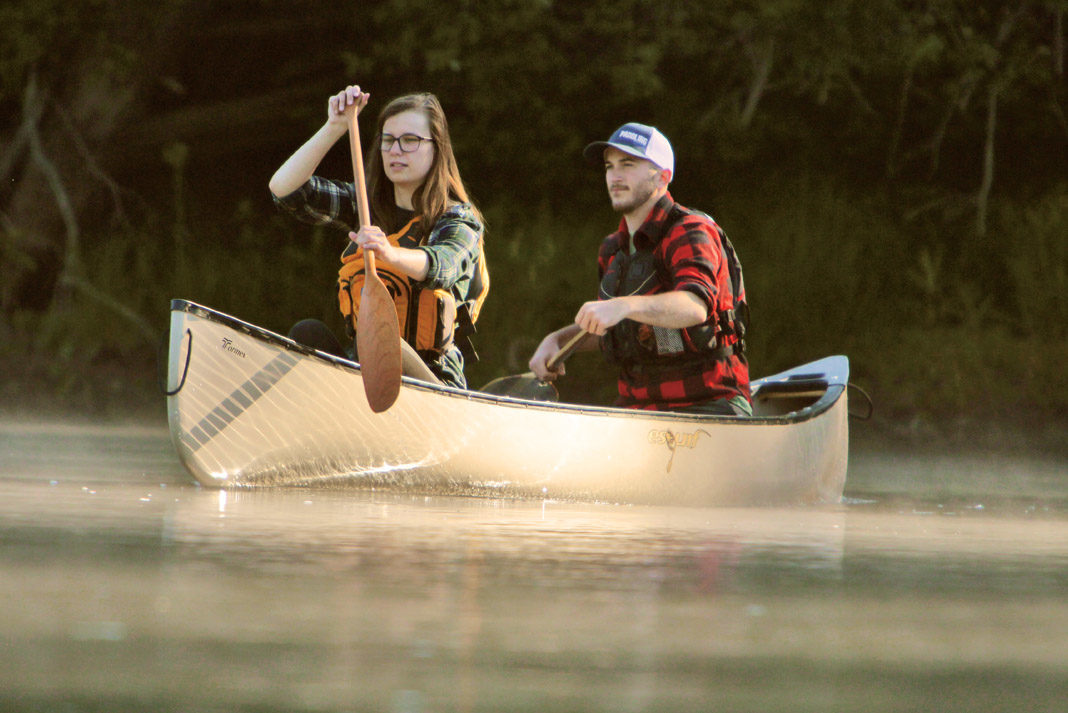
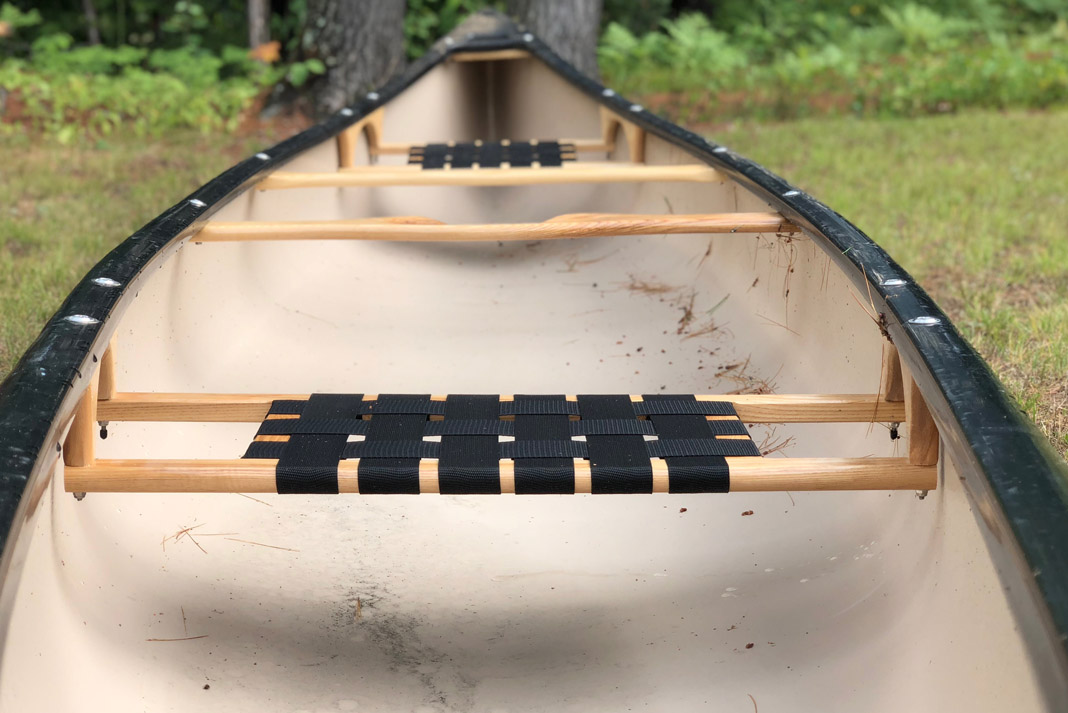



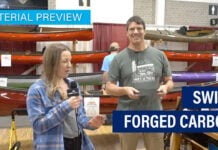
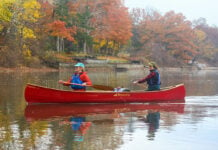
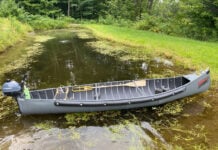

Hi , we’re due replacing our 40+ year old 16 footer. I’ll spare you our criterias but our search brought us to either the Esquif Huron 15 or the NovaCraft Bob Special 15 in TuffStuff. For day trips on lakes and Class I & II rivers , which one would you recommend for reliability and longevity. At 63 , this should be our last paddling investment. In waiting to read you. Thansk